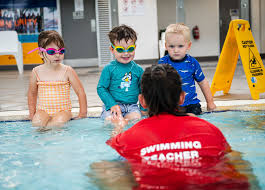A guide to what you’ll actually learn in a water safety course—and why it matters
Water Safety Courses: More Than Just Treading Water
It only takes seconds. One distraction, one misstep, and water can turn dangerous—especially for children and vulnerable adults. In Australia, where our beaches, rivers, and backyard pools are an everyday part of life, water safety isn’t optional. It’s a skill set.
And yet, many Australians don’t realise that a water safety course offers far more than just learning to swim. It’s a structured approach to surviving—and thriving—in aquatic environments. Whether you’re a parent, a teacher, a swim school instructor, or just someone who spends a lot of time near water, knowing what to do (and what not to do) could save a life.
What a Water Safety Course Actually Teaches
Understanding water risks
At the core of any water safety course is risk awareness. You’ll learn how to assess environments like pools, rivers, lakes, and the ocean. Conditions like rips, submerged objects, murky water, and unstable footing are covered in detail. It’s about recognising danger before you’re in it.
Courses usually begin by building this mental muscle—how to read a scene, notice hazards, and avoid complacency.
Survival skills, not just strokes
While swimming technique is part of the course, survival skills take priority. Think floating, sculling, treading water, and controlled breathing. These are skills you can draw on even when tired or caught in strong currents.
Courses also teach how to:
- Enter water safely (from different heights and conditions)
- Conserve energy in cold or open water
- Signal for help
- Exit safely, even without stairs or ladders
These aren’t things you learn doing laps.
Rescue techniques for non-professionals
You don’t need to be a lifeguard to help someone in trouble. But there’s a right way—and a very wrong way—to try. In fact, over 80% of bystander rescues that go wrong do so because the rescuer enters the water without training. Source: Royal Life Saving Australia
A quality water safety course trains participants in dry rescues (using ropes, sticks, floatation devices), as well as contact rescues and safe tow techniques for stronger swimmers. It also covers how to manage panic in others, without putting yourself at risk.
Who Should Take a Water Safety Course?
Parents and guardians
If your child is in swimming lessons, but you’re not confident in water, you’re missing a vital link in safety. Courses empower parents with the knowledge to respond in an emergency—even if that just means staying calm and directing others.
Teachers, coaches, and school staff
Many school excursions involve pools or beach activities. Staff responsible for supervision can dramatically increase their preparedness with a water safety course. It’s also a step towards formal aquatic qualifications.
Young adults and uni students
Living in a share house with a pool? Heading on a gap year to surf the east coast? Being young and fit doesn’t always equal being water smart. Courses give real-world safety grounding, especially for those who grew up without regular exposure to water.
How Many Swimming Lessons Does It Take?
Let’s clear this up: swimming lessons are not the same as water safety education. Learning freestyle in a pool won’t necessarily prepare someone for an unexpected current or a cold shock response. However, the two complement each other.
A typical child might need 10–15 lessons just to float, breathe, and propel themselves confidently. Adults learning from scratch may need 20–25 structured sessions. But a water safety course compresses years of practical insight into a few powerful modules—usually 1–2 days of immersive, scenario-based training.
You can explore certified courses by searching for a local water safety course provider.
Is Online Water Safety Training Enough?
The short answer? It helps—but it’s not the whole picture.
Online modules can teach theory, like:
- Hazard recognition
- Rescue methods
- First aid principles
- Understanding drowning statistics
But practical experience—jumping in, floating with clothes on, trying to rescue someone with a kickboard—is irreplaceable. The full benefit comes from doing, not just reading.
If you’re serious about being safer around water, look for blended learning courses that offer both online theory and in-person assessment. You’ll find several options via certified water safety course providers.
What Are the Signs of a Good Water Safety Program?
Not all programs are created equal. Look for ones that offer:
- Accredited facilitators with aquatic qualifications
- Scenario-based learning in real or simulated water environments
- Coverage of all age groups, including infants, teens, and older adults
- CPR and first aid add-ons
- Recognition by national authorities like Swim Australia or AUSTSWIM
These details can make a big difference in how confident you feel once the course is done.
The Bottom Line
You don’t need to be an Olympic swimmer to make a difference in an emergency. But you do need skills—and the right mindset. A water safety course gives you both.
Whether you’re supervising a pool party, heading on holiday, or just want to build your confidence near the water, the time to learn is before you need it. Check out a local water safety course and take the plunge—because safe water is everyone’s responsibility.

